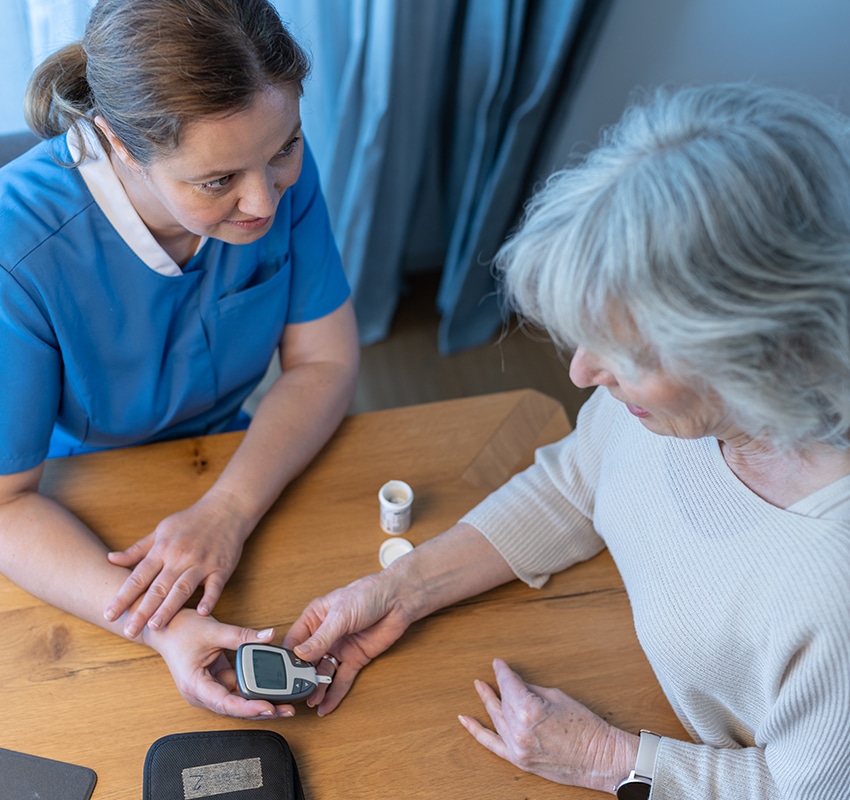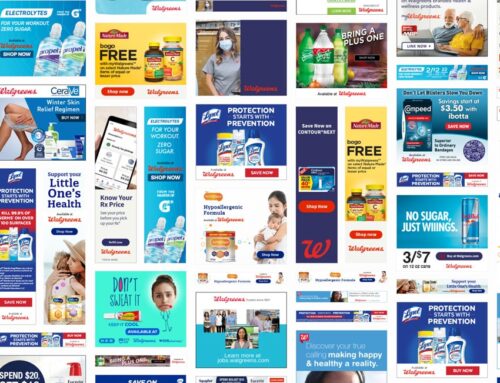Impact of Ads Aimed at Elderly Diabetes Patients
Advertising has the potential to influence our decisions when it comes to diabetes care and can shape what we know about managing this condition. But have you thought of how ads that target elderly patients with diabetes may affect their health, management routines, and quality of life? This blog post looks into such ads for senior citizens with diabetic needs. Analyzing its effects on people while taking ethical concerns into account and looking at productive case studies for best practices.
Key Takeaways
- Ads targeting elderly diabetes patients should focus on patient needs and promote informed decision-making.
- Campaign objectives for elderly diabetes patients include raising awareness, promoting self-management, and advocating for policy changes.
- Effective campaigns use methods and strategies to involve senior diabetes patients and improve their health results.
Understanding Ads Targeting Elderly Diabetes Patients
When treating the condition, diabetes in older persons has specific needs and requirements that must be taken into account. Advertising can play an important role by supplying elderly patients with information regarding treatment options as well as guidance on maintaining their health and quality of life effectively. Understanding the different types of advertisements that are airing and any significant messages that they may have for this specific age group is essential.
Types of Ads
In accordance with the American Diabetes Association’s guidelines, elderly diabetes patients can be targeted through various forms of media such as print, television, and digital ads. Many of these advertisements highlight treatments like sulfonylureas which are specifically ideal for seniors who may not qualify for insulin therapy. There are also newer classes of antihyperglycemics including DPP-4 inhibitors and GLP-1 receptor agonists that have their own sets of advantages or risks associated – while the former has minimal side effects but a low risk in regards to hypoglycemia. Later might cause issues ranging from nausea to more severe cases where monitoring blood glucose levels is highly recommended to avoid any potential complications.
Continuous glucose monitoring and education programs about how to best approach one’s own healthcare needs related to diabetes care are two additional services that are intended to help elderly people with this condition manage their condition more effectively. These services are all clearly stated in commercials addressing them accordingly.
Key Messages in Ads
For elderly individuals who are living with diabetes, ads emphasize the importance of tailored care and taking into account specific needs such as cardiovascular disease or adjusting insulin doses for age-specific issues. In order to ensure that older persons with this chronic condition make informed decisions when managing their medical condition, social networks must be there to offer assistance.
The Role of Advertising in Diabetes Care for Older Adults
Advertising holds a vital role in diabetes care for elderly individuals, both by informing patients and caregivers of their treatment options as well as impacting decisions made regarding management. Consequently, having an understanding of advertising’s place is essential to formulating effective approaches that target this age group with regard to successfully navigating diabetes-related matters. Let’s explore in more detail how ads can affect healthcare choices while also supplying instructional resources.
Influencing Treatment Choices
Ads can be powerful instruments in guiding older adults with diabetes on the right treatment for their needs, emphasizing things such as cardiovascular benefits like blood pressure control and established atherosclerotic cardiovascular disease prevention. Clinical trials of GLP-1 receptor agonists have proven to control cardiovascular risk, heart attack, and stroke among patients of all ages. This is especially applicable to those who are at a higher risk due to coronary heart disease or worse chronic kidney disease.
These ads will inform individuals about available options for handling their condition along with associated potential side effects – allowing them full insight into managing it properly based on one’s individual circumstances. Such information presented through these advertisements may also play an important role in shaping perceptions towards treatments which could consequently cause changing preferences when considering diabetics care choices among elderly people.
Educating Patients and Caregivers
Ads not just guide patients and caregivers to determine the most appropriate treatment, but can also serve as a tool for learning about effective practices related to diabetes care. For instance, these ads may focus on promoting self-management education which could be advantageous in ensuring optimal health and quality of life among elderly people affected with diabetes. To this, they provide facts concerning different available treatments so that informed decisions regarding their particular condition can be made by both patient and caregiver alike. Thus advertisements aid those involved by delivering accurate information along with valuable resources enabling them to take charge of their own healthcare choices.
Evaluating the Effectiveness of Ads Aimed at Elderly Diabetes Patients
The effectiveness of ads targeting elderly diabetes patients must be gauged to comprehend their effect. This entails assessing how much awareness, knowledge, and action they spur as well as analyzing their contribution towards better results in treating the condition among this population group.
To evaluate these parameters we will look into different methods that measure ad impact and explore ways that advertising can aid older persons with managing diabetes more effectively.
Measuring Ad Impact
To ensure that diabetic elderly patients have access to high-quality care, it is essential to assess the effectiveness of advertisements that target them. Tools such as ADDQOL, ADS, and DHP can be used when assessing changes in attitudes and knowledge among this population while feedback from stakeholders may also prove helpful.
Measuring reach, engagement, recall or any other impact that an advertisement has on its target audience provides insightful information regarding how effective it really is at addressing issues relating to independent risk factors and overall diabetes management as well as promoting successful aging with diabetes through patient education initiatives.
Monitoring these key elements helps identify where improvements should be made so ads will have a positive effect on Diabetes health related Quality Of Life (DHR-QoL). Advertisers must consider all points before creating their campaigns if they wish for them to truly make a difference by positively impacting outcomes amongst those affected by the condition across all ages – especially senior citizens within our society who need extra support due to early onset problems such as Parkinson’s disease / Alzheimer’s etcetera slowing down cognitive functioning abilities. Ad impact analysis enables us to identify the message types that best appeal to various audiences based on age factors, allowing advertisers to produce more effective, well-targeted, and deliverable message content. This ultimately leads to the achievement of desired results and improves both people’s comfort levels when dealing with type 2 diseases, lowering mortality rates globally.
Improving Diabetes Outcomes
Ads that strive to educate and inform the elderly with diabetes can be effective in improving treatment results. These ads should focus on providing helpful resources for modifying behaviors, including customizing information specific to each individual, conveying nutrition guidelines, and promoting physical activities. They must consider practicality when it comes to cost-effectiveness and ease of access. A collaborative effort between healthcare professionals and patients is necessary for successful outcomes.
By addressing issues unique to this population while encouraging sensible decision making through ad campaigns. We will see an improved level of care concerning their diabetic needs resulting in a better quality of life overall. The efficacy then has room within these messages not only by taking steps towards continuous evaluation but also by finding ways to implement developments based upon gathered data from advertisement use over time where applicable.
Ethical Considerations in Ads Targeting Elderly Diabetes Patients
When it comes to diabetes care for older adults, advertising is an integral part of the process. Examining ethical implications surrounding such ads targeting this age group should not be overlooked either. Taking into account accuracy in delivering information and preventing exploitation of vulnerable individuals are two major principles that must be addressed when developing advertisements meant specifically for seniors with diabetes. To elaborate on these necessary ethics considerations further:
Ensuring Accurate Information
Ads designed to reach elderly diabetes sufferers should be up-to-date. In order to avoid any sort of false or deceptive claims. This can be achieved by strictly adhering to guidelines from agencies like the Federal Trade Commission (FTC) and Food and Drug Administration (FDA).
Involving medical experts in creating these ads will help guarantee that all information provided is valid. Likewise, engaging patients during development stages guarantees a relevant advertisement specifically tailored for the demographic it seeks out.
Accuracy must always remain a top priority when making such vital healthcare decisions. Supplying truthful details allows elders with diabetes access to trustworthy resources, allowing them to make informed choices about their disease management regimen.
Avoiding Exploitation
It is important to respect the dignity and autonomy of elderly diabetes patients when targeting them with ads, as well as avoiding any exploitation or discriminatory tactics. Accurate information should be presented and patient privacy must not be breached during this process in order to reduce potential harm factors.
By adhering to ethical standards while considering specific needs related to diabetic care for seniors, we can create advertisements that are both instructive yet also empower this population so they may manage their own condition more effectively.
Promoting an atmosphere where people can make decisions that support their health without fear is key. Thus ensuring a successful outcome for these individuals’ long-term wellness plans.
Best Practices for Ads Aimed at Elderly Diabetes Patients
We have now considered the implications, ethical considerations, and examples of ads targeting this group. To successfully create and utilize advertisements for them we should think about following best practices that emphasize patient requirements and promoting knowledge-based choices. Let us explore these guidelines more deeply by diving into the subsections below.
Focusing on Patient Needs
In order to create ads tailored for elderly diabetes patients, it is important to understand their unique needs and concerns. This may involve managing coexisting conditions, delaying cognitive decline, navigating challenging treatment plans, and offering resources for behavior management.
All these efforts must result in targeted campaigns that will allow this demographic access to vital information needed when making decisions about managing diabetes care more effectively.
Promoting Informed Decision-Making
Ads can help elderly people with diabetes, and their caregivers, make informed choices concerning treatment by supplying them with correct data. They should be able to assist patients in taking part of the decision-making process when talking about care for diabetes with healthcare providers as well as finding extra information. Ads have a crucial role to play in helping these individuals manage their condition effectively through promoting active participation on self-care regarding this disease.
Case Studies: Successful Ads Targeting Elderly Diabetes Patients
By analyzing the successful ad strategies aimed at elderly diabetes patients, we can gain useful information for crafting compelling campaigns that will benefit their health. The following sections look into such examples of effective advertisement objectives, approaches and tactics used in this space.
Through these case studies, it is possible to derive ideas which could be utilized when creating advertisements specifically designed for bettering outcomes related to diabetes care among seniors.
Campaign Objectives
When targeting elderly diabetes patients, it is important to consider what objectives and strategies lead to successful ad campaigns. Examining case studies such as the “Stakeholder Perceptions of Successful Aging with Diabetes” research project can provide insight into these objectives and strategies. For example, data from the “Use of Social Media Advertising as a Clinical Trial Recruitment Strategy” report shows how social media advertising has been used successfully for clinical trial recruitment among older adults aged 60 or more years old.
To achieve an effective campaign, one should focus on raising awareness about age-specific concerns regarding diabetes; promoting self management practices. Advocating policy change that enhances care for seniors diagnosed with this condition. By utilizing insights obtained through relevant reports, advertisers are better informed when crafting their messaging geared towards mature individuals living with type 2 diabetes.
Strategies and Tactics
Advertising strategies need to use specialized content, captivating graphics, and collaborations with trustworthy organizations or powerful individuals to engage diabetes patients effectively. By using these strategies, ads can better get their message across while improving patient behavior in the long run.
For example, on social media platforms like Facebook they can provide resources for behaviour change by personalizing messages as per individual needs which could include information about dieting and exercising plus budget-friendly options that make life easier. All of this is under the guidance of healthcare professionals collaborating together. Doing so has shown effective results when it comes to providing essential care for those suffering from diabetes among other ailments relevant to older demographics, ultimately aiming at better health outcomes overall!
Summary
We can develop ads to influence elderly diabetes patients in their management of the condition, improving not just health but also overall quality of life. By assessing different types and content of adverts for effectiveness, and respecting ethical considerations while working to ideal practices, we will be able create effective advertisements that not only give information but motivate people with diabetes to get empowered as they make decisions regarding their care.









